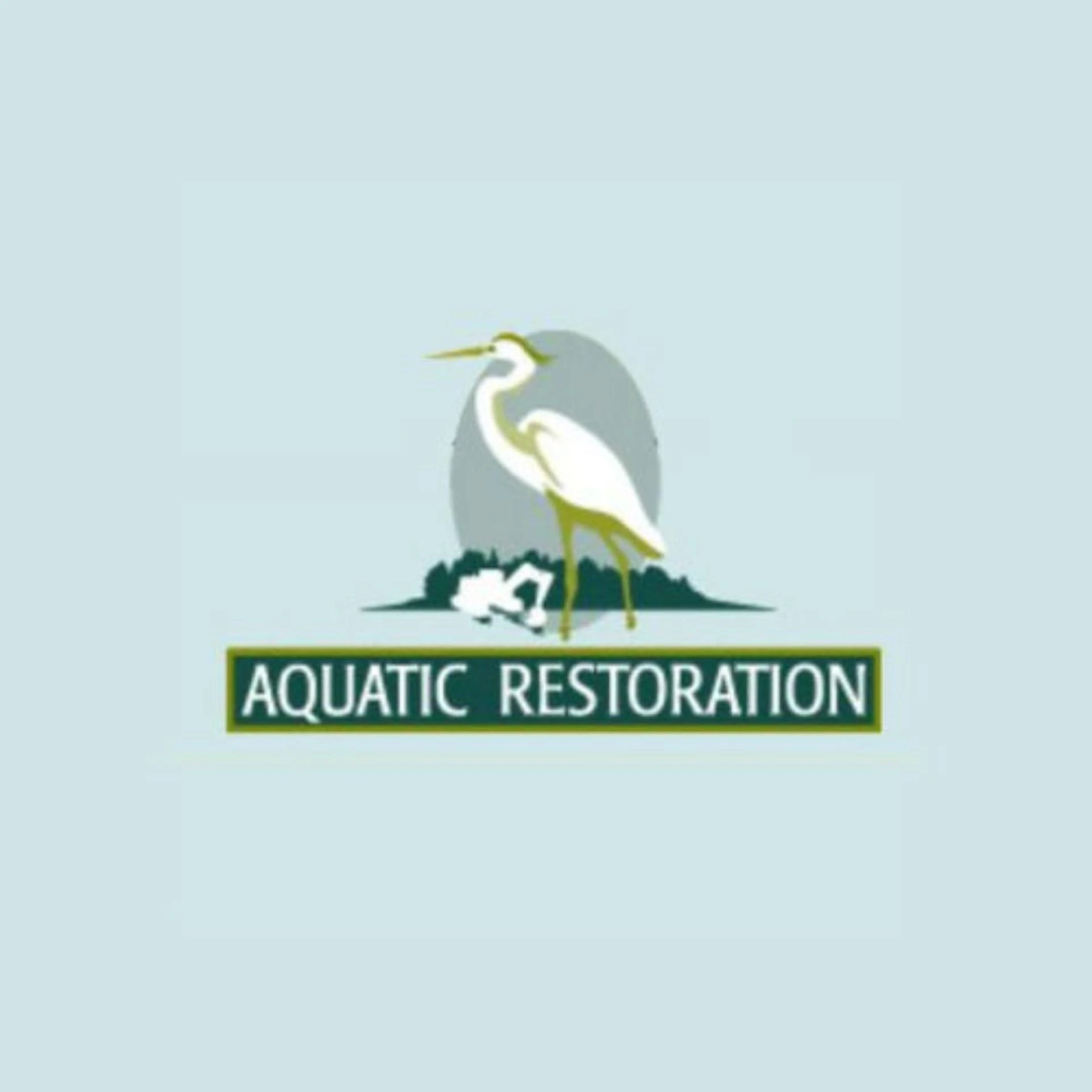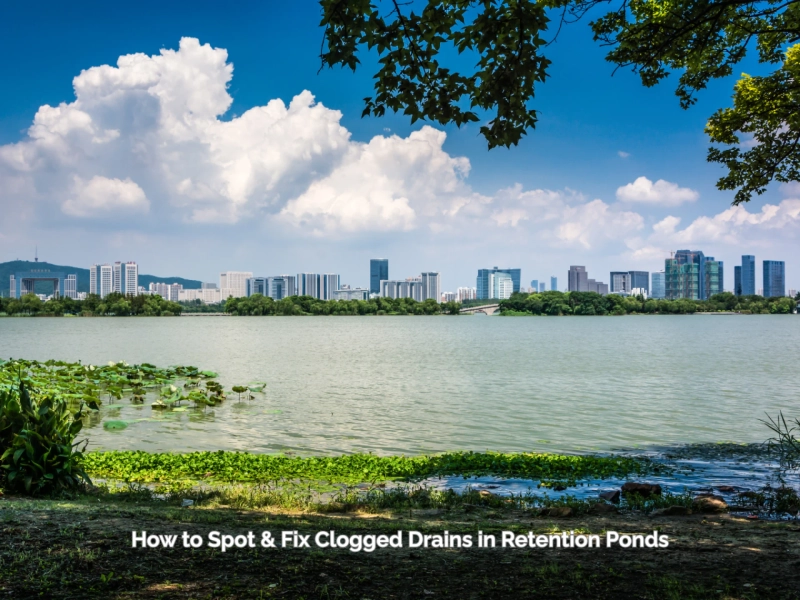→ Retention ponds play a quiet but important role in keeping Madison and Georgia neighborhoods safe from flooding and water damage. They collect stormwater runoff, let dirt and debris settle, and slowly release clean water back into the ground or nearby streams. However, when the drains inside these ponds become clogged, the system stops functioning properly.
A clogged drain in a retention pond can lead to overflow, erosion, mosquito growth, and property damage — problems that are expensive and time-consuming to fix if ignored.
This guide will walk you through how to spot early signs of clogging, what causes it, and the best ways to fix and prevent it — all part of effective Retention Pond Maintenance in Madison, explained in simple terms that even someone new to pond care can understand.
What Is a Retention Pond and Why Does It Matter
A retention pond (also known as a stormwater pond) is a man-made basin designed to collect and hold runoff water from rainstorms, parking lots, and streets. Unlike a detention pond that drains quickly, a retention pond holds water permanently and slowly releases the excess through a controlled outlet system.
In Madison and across Georgia, many communities have these ponds to manage heavy rains. They help reduce:
- Flooding in nearby yards and roads
- Soil erosion
- Pollution entering natural streams and rivers
But for these ponds to do their job, their drainage systems must stay clear.
Why Retention Pond Drains Get Clogged
Most clogs don’t happen overnight. They build up gradually. Let’s look at the most common causes:
- Leaves and Organic Debris: Fallen leaves, grass clippings, and small branches can wash into the pond and block the drain grates or outlet pipes.
- Sediment Build-Up: Over time, dirt and sand settle at the bottom of the pond. Without proper maintenance, this sediment can block water flow.
- Algae Growth and Weeds: Excess nutrients from fertilizers and yard waste can cause algae blooms. When algae die, they sink and create thick layers of organic sludge that restrict water movement.
- Animal Activity: Beavers, muskrats, and turtles sometimes block pipes or create dams near pond outlets.
- Trash and Plastics: Everyday items like bottles, wrappers, or even lawn decorations can get caught in the outlet or inlet structures.
When any of these materials pile up, the drain system gets clogged, water rises above its normal level, and the pond stops functioning correctly.
How to Spot a Clogged Drain in a Retention Pond
Early detection is key to avoiding major repair costs. Here’s what to look for when inspecting a pond:
1. Water Level Higher Than Usual
If you notice that the water level remains high even days after rain, it’s a red flag. A functioning drain should allow water to lower slowly.
2. Overflow Around the Pond
Watch for water spilling over the pond’s edges or into nearby grassy areas. This usually means the outlet is blocked.
3. Slow Water Flow in Outlets
If water trickles weakly or not at all through the outlet pipe, debris could be clogging the opening.
4. Floating Trash or Algae Mats
Large algae blooms or visible trash near the inlet and outlet areas can signal blockage beneath the surface.
5. Foul Odor
Stagnant water trapped by a clog may develop a sour or sulfur-like smell, often caused by decaying organic matter.
6. Erosion Around the Banks
When drainage fails, water may overflow and erode the soil around the edges, creating muddy patches or collapsed banks.
Regular inspections — especially after heavy rainfall — can help identify these issues before they become severe.
Also Check: How Lake Management Improves Water Quality (and Property Value)
How to Fix Clogged Drains in Retention Ponds
Once you suspect clogging, it’s important to act quickly. The right fix depends on the cause and severity of the blockage.
1. Manual Cleaning (For Light Clogs)
Start by removing visible debris:
- Skim floating leaves, trash, or branches with a rake or net.
- Clean drain grates, inlets, and outlets by hand if safely accessible.
This works well for minor buildup and should be part of routine retention pond maintenance in Madison neighborhoods.
2. Flushing the Drain Pipe
If the pipe is partially blocked, professionals can use high-pressure water jets to flush it out. This technique dislodges dirt, algae, and small roots without digging.
3. Sediment Removal (Dredging)
For severe clogging caused by sediment buildup, dredging may be necessary.
This process involves:
- Draining part of the pond
- Removing layers of silt and organic matter
- Restoring proper water depth and flow
It’s a heavy task, but essential every few years to keep the pond functional.
4. Vegetation Control
Cutting back tall grasses, weeds, or aquatic plants near the drain helps prevent future clogging. Avoid using chemicals that could harm fish or water quality.
5. Repairing or Replacing Damaged Pipes
Sometimes, the issue isn’t debris — it’s broken or collapsed pipes underground. A professional inspection using a CCTV drain camera can identify cracks or roots blocking the line.
Replacement might be necessary to restore proper drainage.
6. Installing Trash Racks or Screens
These metal grates prevent large debris from entering the drain. Regularly cleaning them can save thousands in future repair costs.
How Often Should Retention Ponds Be Maintained?
Retention pond maintenance in Madison and across Georgia should be done at least twice a year, plus after major storms.
A typical maintenance checklist includes:
- Inspecting inlets and outlets
- Checking for erosion
- Measuring sediment depth
- Removing trash and debris
- Monitoring vegetation growth
- Testing water quality
For commercial or HOA-managed ponds, hiring a stormwater maintenance company ensures compliance with local environmental rules and keeps the system working year-round.
Who Is Responsible for Retention Pond Maintenance?
In most communities, the responsibility falls on:
- Homeowners’ Associations (HOAs)
- Property management companies
- Commercial property owners
If you live in a neighborhood with a shared retention pond, your HOA likely manages it. However, if your property has a private pond, it’s your job to maintain it.
Failure to maintain ponds properly can lead to city fines, flooding claims, and water contamination.
How to Prevent Clogged Drains in Retention Ponds
Preventing clogging is far easier (and cheaper) than fixing it later.
Here are practical steps to keep your pond in top shape:
- Regular Cleaning: Remove debris, especially after storms or during fall when leaves drop.
- Install Barriers: Use trash racks, silt fences, or rock filters at inlets to trap debris before it reaches the drain.
- Maintain Buffer Vegetation: Plant grasses or native plants along pond edges to reduce sediment wash-off.
- Avoid Dumping Yard Waste: Never blow leaves, mulch, or grass into ponds — they quickly turn into clogs.
- Control Fertilizer Use: Excess nutrients feed algae growth. Use fertilizers sparingly near ponds.
- Schedule Annual Professional Inspections: Experts can identify small problems like minor sediment buildup before they block the system.
For annual professional retention pond inspections, call us today at 770-592-5099 or 678-949-3973. Keep your pond healthy and functioning all year long!
Common Questions People Ask (Optimized for PAA and AI Overview)
1. How do I know if my retention pond drain is clogged?
You’ll notice higher-than-normal water levels, slow draining, visible trash near the outlet, or overflow during rain.
2. Can I unclog a retention pond drain myself?
You can remove surface debris and clear grates, but deeper blockages or pipe issues usually need professional help.
3. How often should retention ponds be cleaned in Madison, GA?
At least twice a year and after every heavy rainfall. Some ponds near wooded areas may need quarterly cleaning.
4. What happens if a retention pond is not maintained?
The pond may overflow, erode surrounding land, attract mosquitoes, and contaminate nearby water sources.
5. Who do I call for professional retention pond maintenance in Madison?
Contact a local pond and stormwater management company that specializes in retention pond maintenance and inspection.
Key Takeaways
- Retention ponds manage stormwater and prevent flooding, but their drains must stay clear.
- Common causes of clogs include leaves, sediment, algae, and animal activity.
- Early signs of clogging: high water levels, slow drainage, odor, and bank erosion.
- Fixes range from manual cleaning to professional dredging and pipe repair.
- Regular retention pond maintenance in Madison is the best prevention method — ideally twice a year and after big storms.
- Keeping your pond clear protects your property, your neighborhood, and your local water ecosystem.
Final Thought
Retention ponds are like your neighborhood’s hidden plumbing system — quietly managing stormwater every day. When the drains clog, problems start small but grow quickly. A little routine care and timely professional maintenance can keep your pond healthy, your property safe, and your community’s environment thriving.
Written By: Aquatic Restoration
At Aquatic Restoration, we’ve been helping Georgia pond and lake owners since 1970. Our services include shoreline stabilization, spillway renovation, siphon installation, lake management, dredging, and retention pond maintenance. We fix problems without harming your land or budget.
Phone: 770-592-5099 | 678-949-3973
Mail: chris@aquaticrestoration.net
Website: www.aquaticrestoration.net
Find on Google Maps: https://maps.app.goo.gl/HYvUbp4XReUuhjST7



